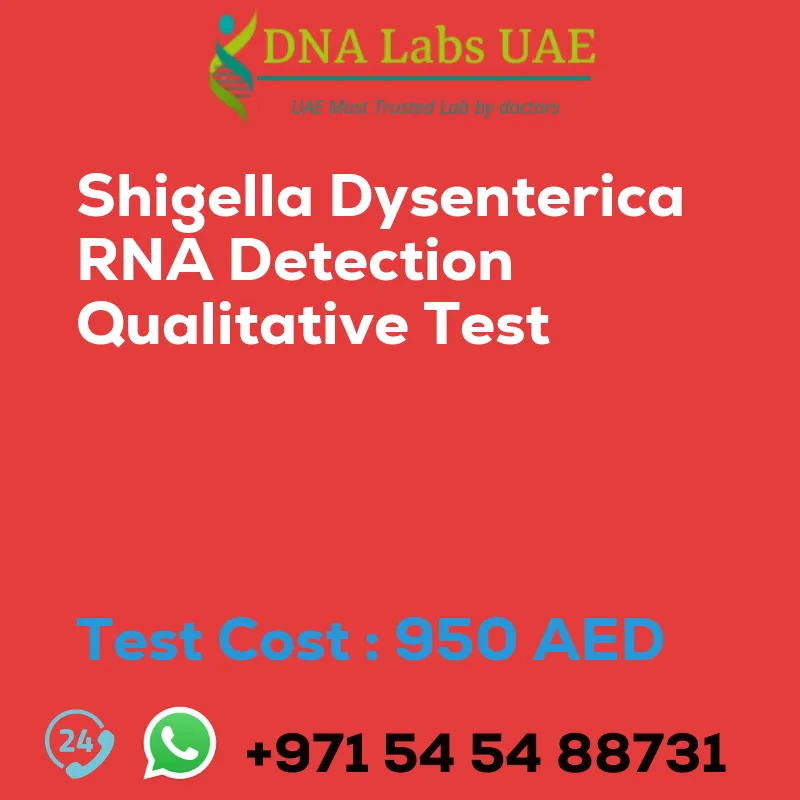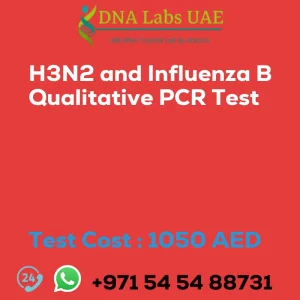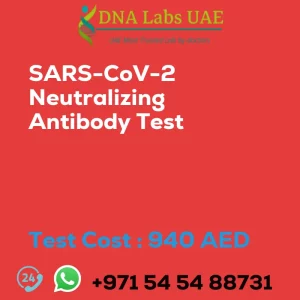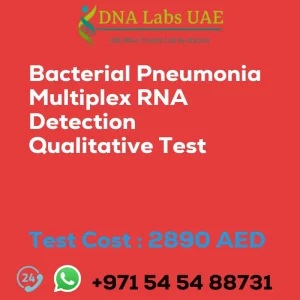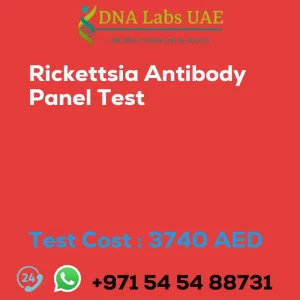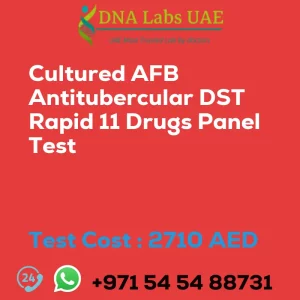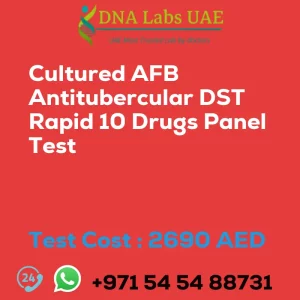Shigella Dysentrica RNA Detection Qualitative Test
Introduction
Welcome to DNA Labs UAE, where we offer the Shigella Dysentrica RNA Detection Qualitative Test. This test is designed to detect the presence of Shigella dysenteriae-specific RNA sequences in a sample using molecular techniques such as polymerase chain reaction (PCR) or nucleic acid amplification tests (NAATs).
Test Details
The qualitative test for detecting Shigella dysenteriae RNA involves several steps:
- Sample collection: A sample is collected from the patient suspected of having a Shigella dysenteriae infection. This sample can be stool, rectal swab, or any other appropriate specimen.
- Nucleic acid extraction: The RNA is extracted from the collected sample using specialized extraction kits or methods. This step is crucial to obtain pure RNA for further analysis.
- Reverse transcription: The extracted RNA is reverse transcribed into complementary DNA (cDNA) using reverse transcriptase enzyme. This step converts the RNA into a more stable and amplifiable form.
- PCR amplification: The cDNA is then subjected to PCR using specific primers that target Shigella dysenteriae RNA sequences. These primers are designed to amplify only the target RNA sequences if present in the sample.
- Gel electrophoresis: The PCR products are separated by gel electrophoresis, which helps visualize the amplified DNA fragments. If the target RNA sequences were present in the sample, a band of the expected size should be visible on the gel.
- Interpretation: The presence or absence of the target band on the gel determines the qualitative result. If the band is present, it indicates the presence of Shigella dysenteriae RNA in the sample, suggesting an active infection. If the band is absent, it indicates the absence of Shigella dysenteriae RNA or a very low level of the target RNA in the sample.
Test Name
Shigella Dysentrica RNA Detection Qualitative Test
Components
Price: 950.0 AED
Sample Condition
Whole Blood, rectal swabs, food samples, water sample
Report Delivery
3rd Working Day Email: 36 hours. On phone: 24 hours
Method
Real Time PCR
Test Type
Viral
Doctor
Physician
Test Department
Genetics
Pre Test Information
Need to sign Consent document and bring any clinical history of patient for Shigella Dysentrica (RNA Detection) Qualitative Test
It is important to note that this is a general outline, and the specific details of the test may vary depending on the laboratory and the specific RNA detection method used. Additionally, it is always recommended to consult with a healthcare professional or a laboratory specialist for accurate and reliable diagnosis.
| Test Name | Shigella Dysentrica RNA Detection Qualitative Test |
|---|---|
| Components | |
| Price | 950.0 AED |
| Sample Condition | Whole Blood, rectal swabs, food samples, water sample |
| Report Delivery | 3rd Working Day Email:-36 hours. On phone: 24 hours |
| Method | Real Time PCR |
| Test type | Viral |
| Doctor | Physician |
| Test Department: | Genetics |
| Pre Test Information | Need to sign Consent document and bring any clinical history of patient forShigella Dysentrica (RNA Detection) QualitativeTest |
| Test Details |
The qualitative test for detecting Shigella dysenteriae RNA involves the use of molecular techniques such as polymerase chain reaction (PCR) or nucleic acid amplification tests (NAATs). These tests are designed to detect the presence of Shigella dysenteriae-specific RNA sequences in a sample. Here is a general outline of the steps involved in the qualitative RNA detection test: 1. Sample collection: A sample is collected from the patient suspected of having a Shigella dysenteriae infection. This sample can be stool, rectal swab, or any other appropriate specimen. 2. Nucleic acid extraction: The RNA is extracted from the collected sample using specialized extraction kits or methods. This step is crucial to obtain pure RNA for further analysis. 3. Reverse transcription: The extracted RNA is reverse transcribed into complementary DNA (cDNA) using reverse transcriptase enzyme. This step converts the RNA into a more stable and amplifiable form. 4. PCR amplification: The cDNA is then subjected to PCR using specific primers that target Shigella dysenteriae RNA sequences. These primers are designed to amplify only the target RNA sequences if present in the sample. 5. Gel electrophoresis: The PCR products are separated by gel electrophoresis, which helps visualize the amplified DNA fragments. If the target RNA sequences were present in the sample, a band of the expected size should be visible on the gel. 6. Interpretation: The presence or absence of the target band on the gel determines the qualitative result. If the band is present, it indicates the presence of Shigella dysenteriae RNA in the sample, suggesting an active infection. If the band is absent, it indicates the absence of Shigella dysenteriae RNA or a very low level of the target RNA in the sample. It is important to note that this is a general outline, and the specific details of the test may vary depending on the laboratory and the specific RNA detection method used. Additionally, it is always recommended to consult with a healthcare professional or a laboratory specialist for accurate and reliable diagnosis. |

